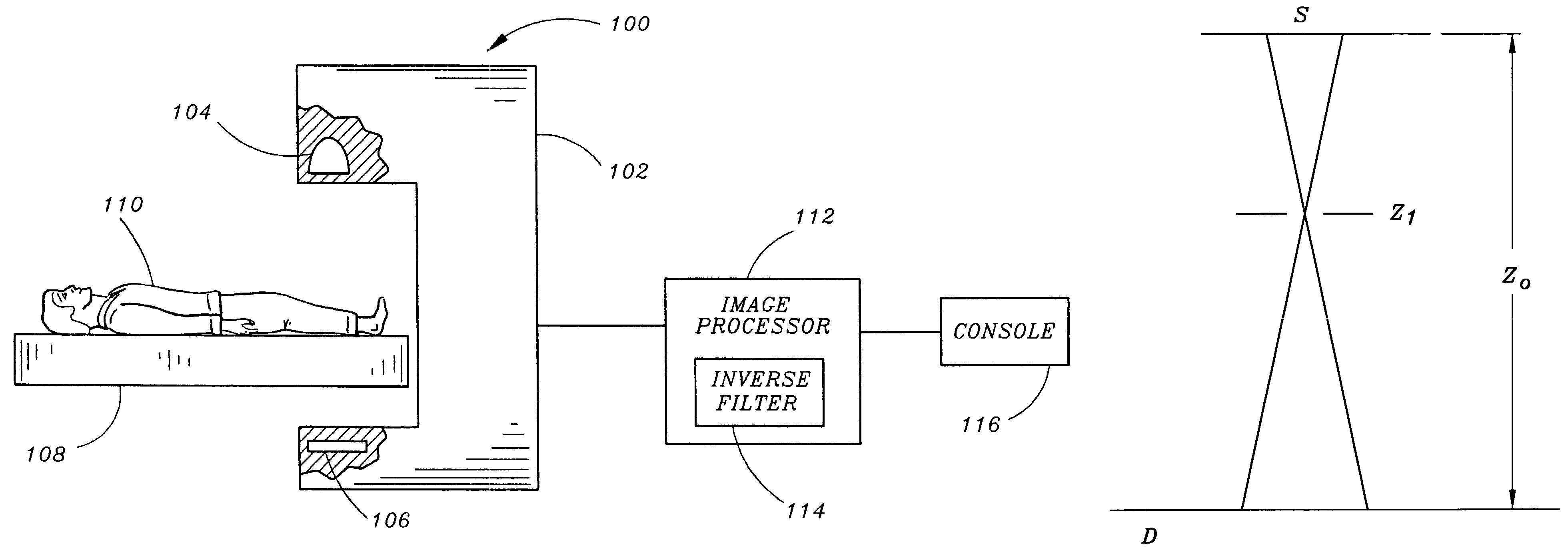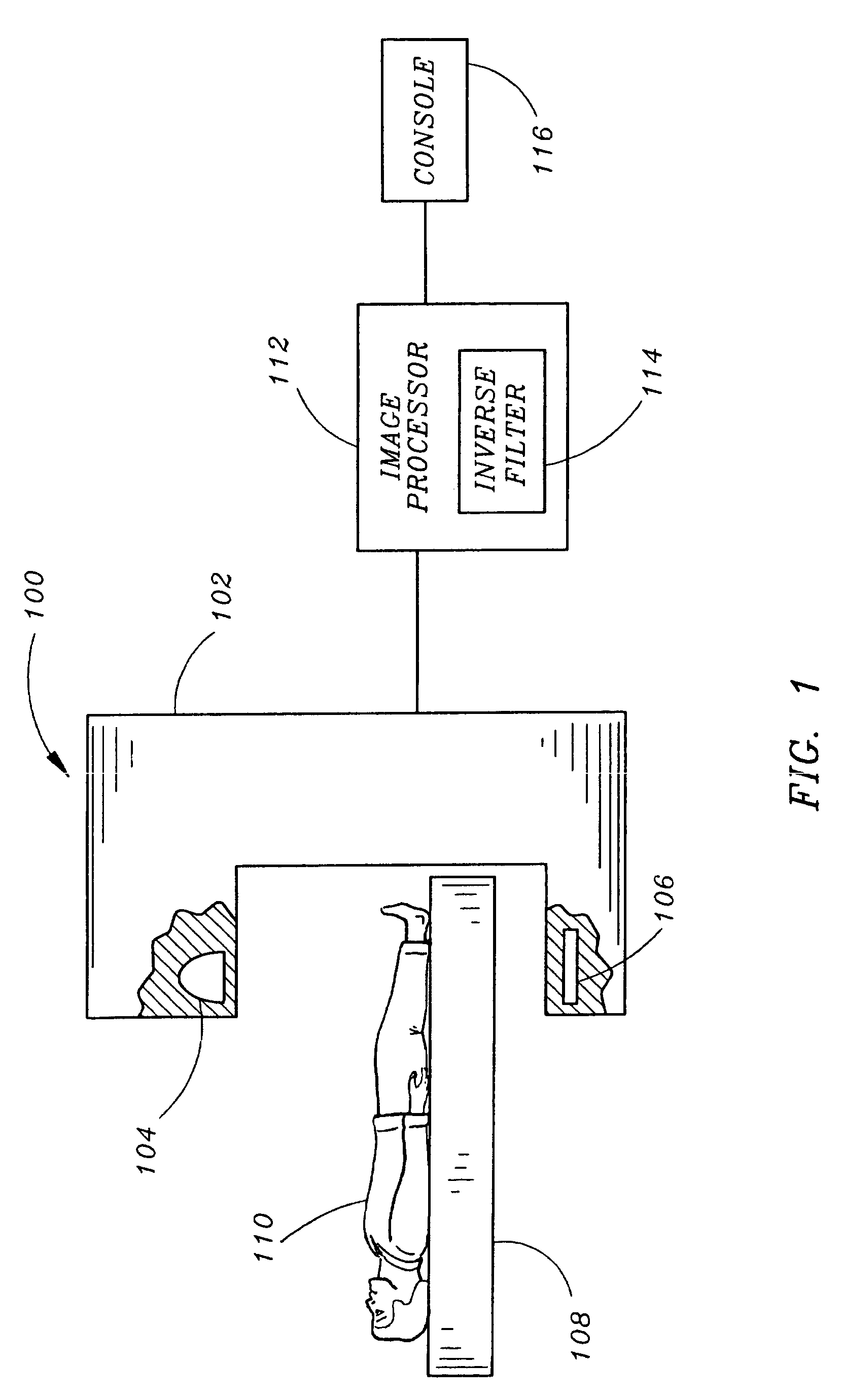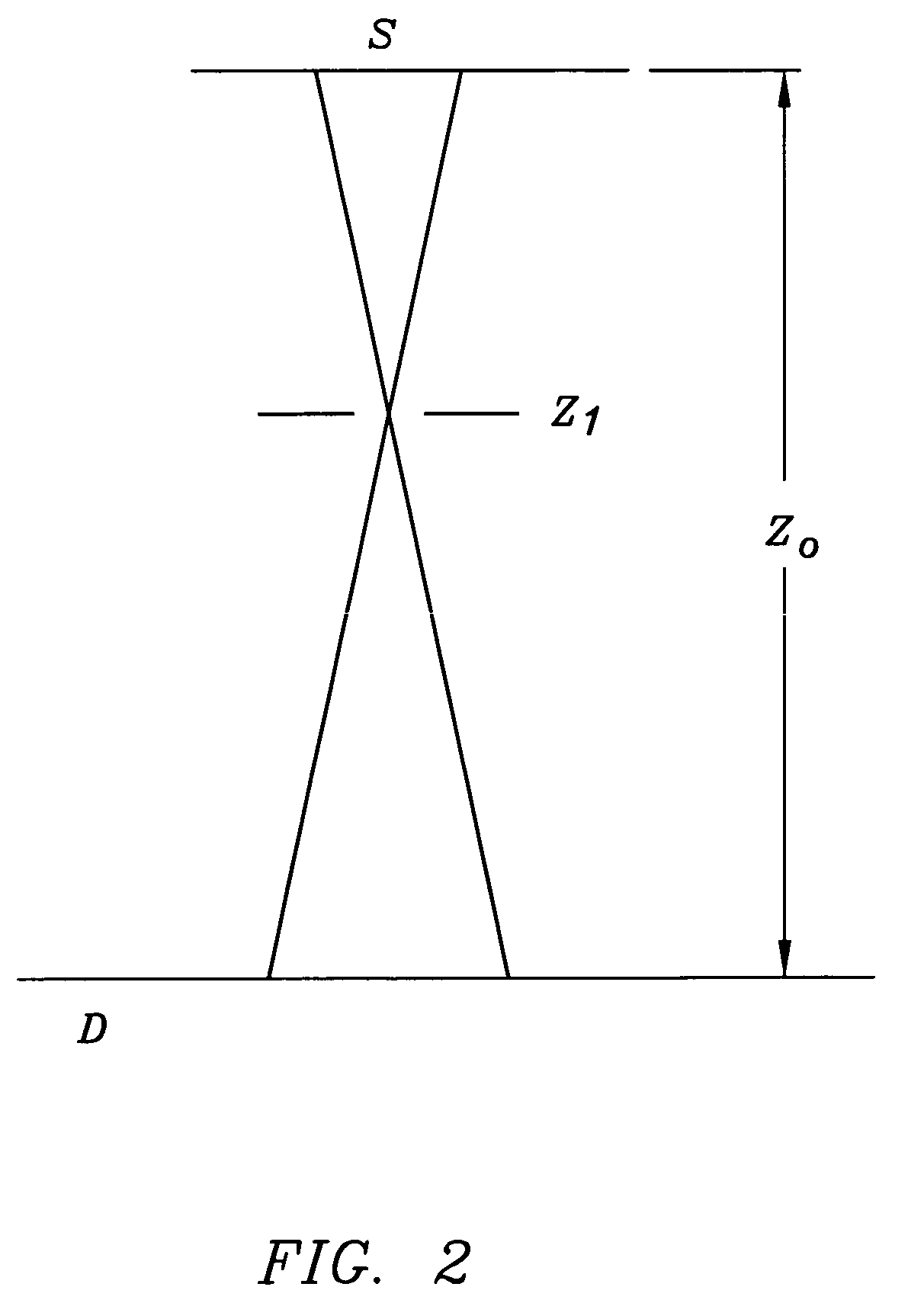Spot-size effect reduction
a radiographic imaging device and spot size technology, applied in the field of spot size effect reduction, can solve the problems of inability to reduce the spot size of the accelerator to spot size, inability to control the electrons to a very small spot size, and inherent blur of the image generated, so as to improve the image quality of the radiographic imaging device and mitigate the adverse effects of finite spot size on image quality
- Summary
- Abstract
- Description
- Claims
- Application Information
AI Technical Summary
Benefits of technology
Problems solved by technology
Method used
Image
Examples
Embodiment Construction
[0014]Reference will now be made in detail to the presently preferred embodiments of the invention, examples of which are illustrated in the accompanying drawings.
[0015]FIG. 1 illustrates a radiographic imaging device in accordance with an exemplary embodiment of the present invention. The radiographic imaging device 100 includes a scanning unit or gantry 102 supporting an X-ray source 104 and a detector assembly 106, and a patient table 108 for supporting a patient 110 undergoing radiographic imaging. For example, the radiographic imaging device 100 may be a cone beam computed tomography (CBCT) imaging device operating in the megavolt range. The detector assembly 106 includes a plurality of detection elements (e.g., ultra fast ceramic (UFC) detectors, amorphous silicon flat panel detectors, charged coupled device (CCD) detectors, or the like) which convert incident X-rays of varying intensity to analog electrical signals. These analog signals are then amplified and converted to dig...
PUM
| Property | Measurement | Unit |
|---|---|---|
| angle | aaaaa | aaaaa |
| diameters | aaaaa | aaaaa |
| spot sizes | aaaaa | aaaaa |
Abstract
Description
Claims
Application Information
 Login to View More
Login to View More - R&D
- Intellectual Property
- Life Sciences
- Materials
- Tech Scout
- Unparalleled Data Quality
- Higher Quality Content
- 60% Fewer Hallucinations
Browse by: Latest US Patents, China's latest patents, Technical Efficacy Thesaurus, Application Domain, Technology Topic, Popular Technical Reports.
© 2025 PatSnap. All rights reserved.Legal|Privacy policy|Modern Slavery Act Transparency Statement|Sitemap|About US| Contact US: help@patsnap.com



